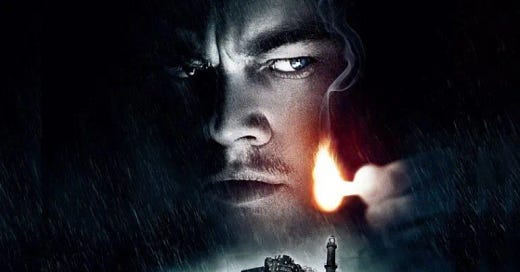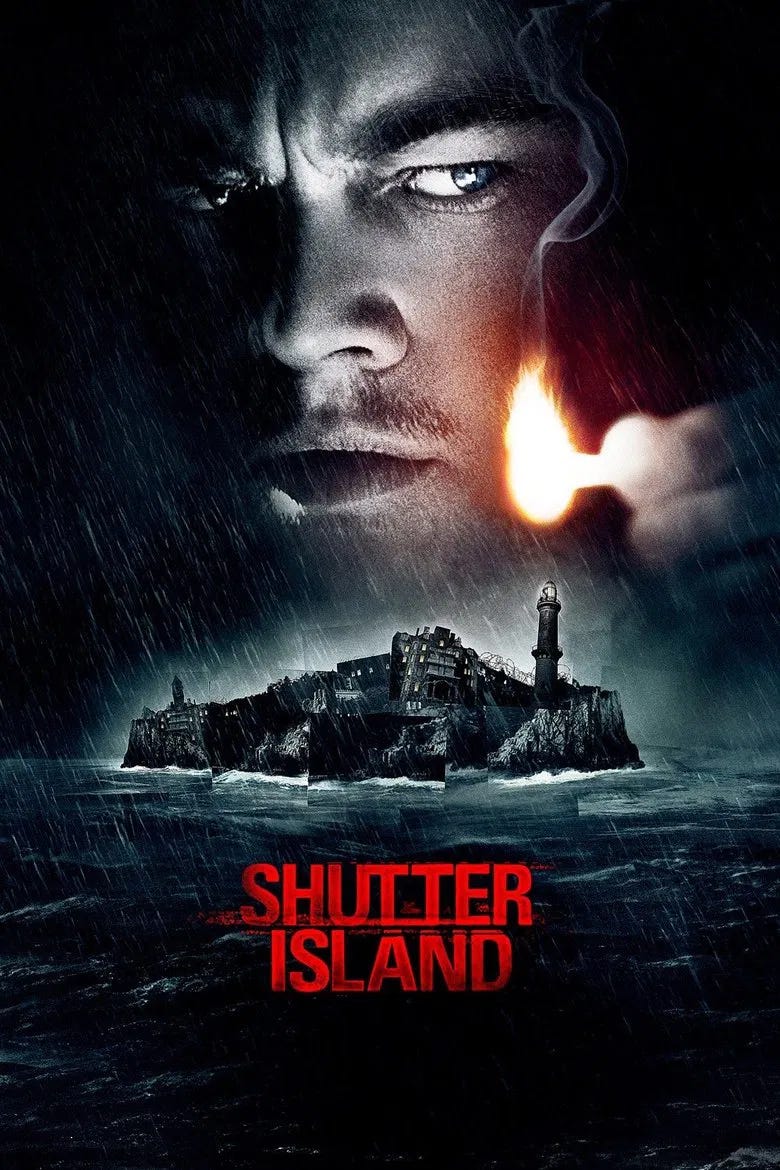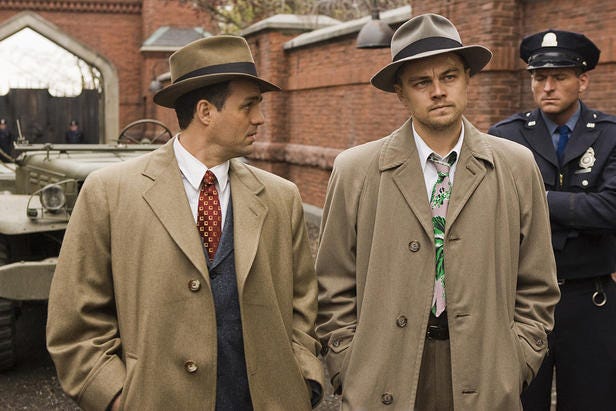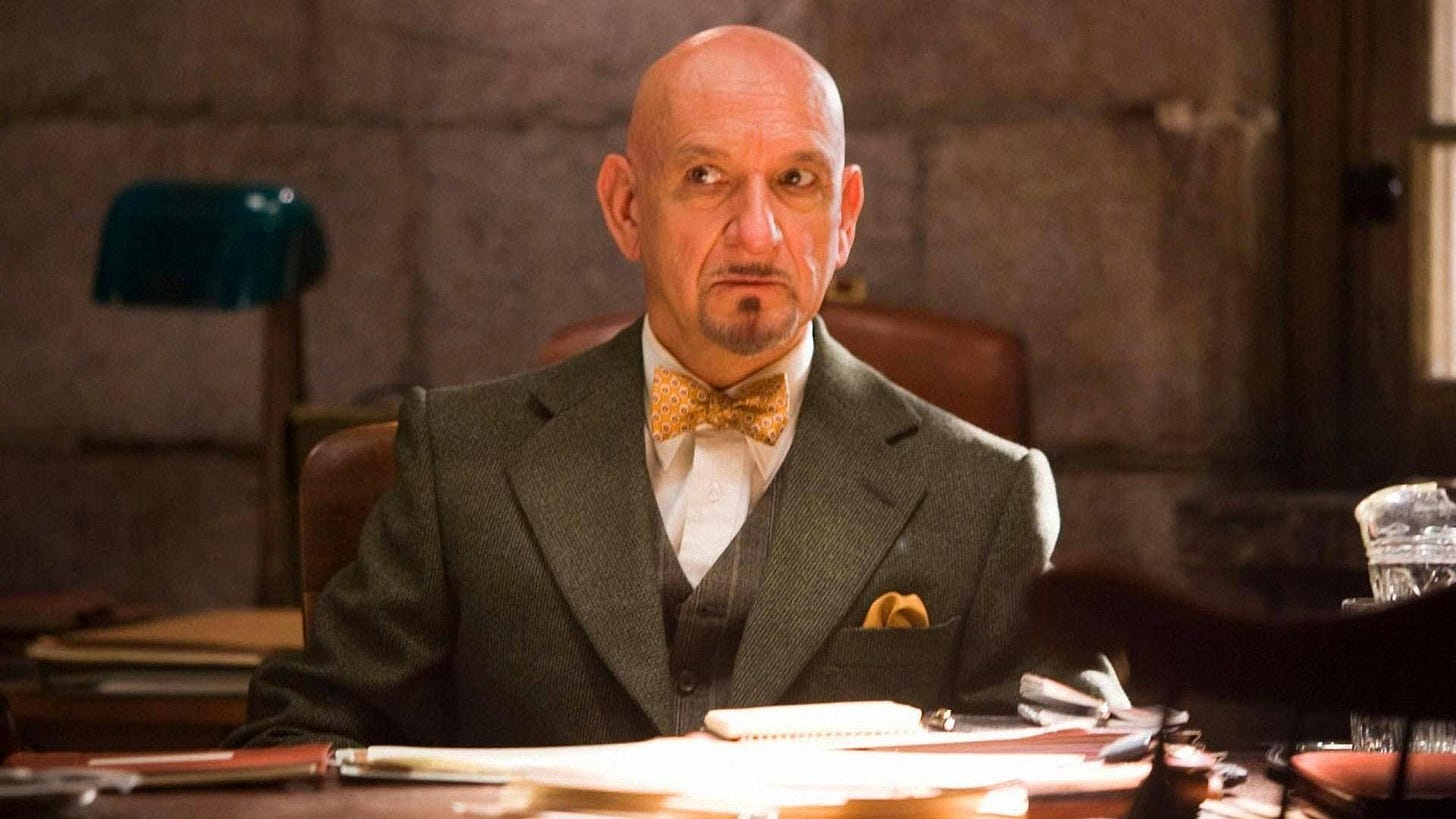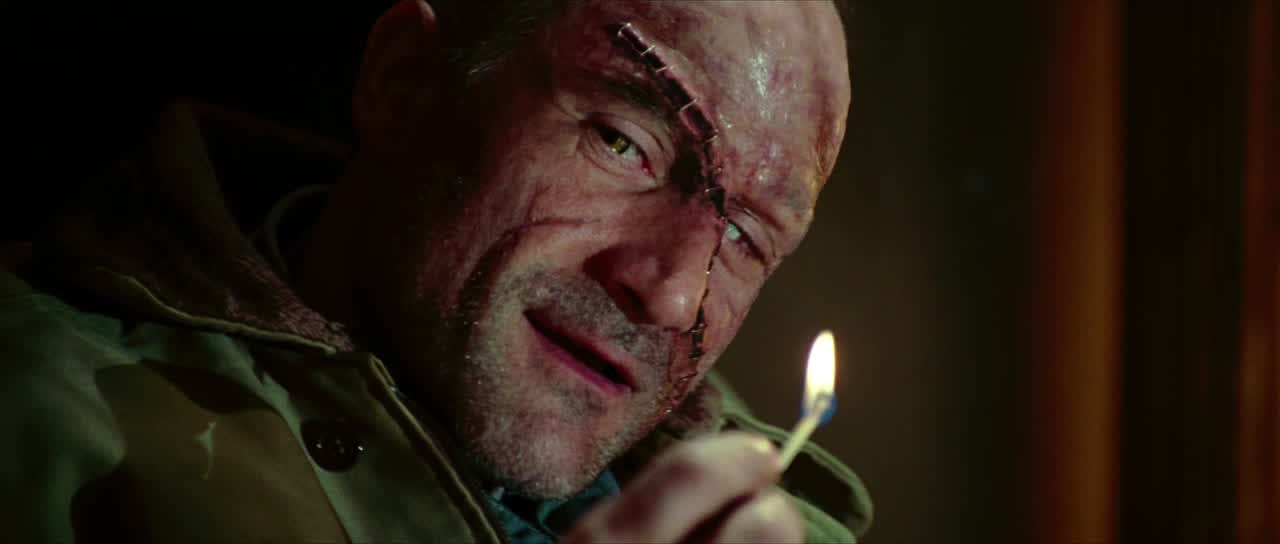Directed by Martin Scorsese
United States, 2010
Leonardo DiCaprio begins this Martin Scorsese film in a rather discomfiting position. He’s on board a ship, but he’s not the dashing young Jack Dawson that won a berth on the Titanic. DiCaprio’s Teddy Daniels is a US Marshal whose face looks as crumpled as his fedora. Seasick, we find him vomiting into a toilet bowl.
Pull yourself together Teddy.
He says that as he gazes at his reflection in the mirror, but unlike Travis Bickle this traumatised veteran (in this case WW2 rather than Vietnam) has a degree of insight into his fractured psyche.
The boat is a ferry taking Daniels and his new partner Chuck Aule (Mark Ruffalo) across a fogbound Boston Harbour, a harbour teeming with red herrings, as the ominous-sounding cello chords of Krzysztof Penderecki’s Symphony no. 3 herald what lies ahead. The lawmen soon sight their destination: Shutter Island, an island hemmed in by sheer clichés… I mean cliffs.
Shutter Island is also the title of this film, Scorsese’s schlock horror thriller. Considered one of America’s greatest living directors, Scorsese is also known as a passionate historian of cinema and regularly cites the influence of film noir and the psychological thrillers that came out of post-war Hollywood. With Shutter Island, he is clearly tipping his hat to the paranoid B-movies of the 50s and 60s, and in particular Sam Fuller’s Shock Corridor, where a reporter gets himself committed to a mental hospital to investigate a murder and ends up risking his sanity.
Here we see DiCaprio, as the WW2 veteran turned detective, arrive on the island that houses an Asylum for the Criminally Insane ( …that really should be in full caps). He is looking for a patient that has gone missing. I mentioned red-herrings and clichés… well, with Shutter Island, Scorsese has clearly been rifling through his Criterion Collection of DVDs in search of any thriller plot device that would fit. We have the ‘locked room mystery’, the ‘closed society’, the ‘sinister German - Nazi or not? - doctor’, dungeons on loan from the set of The Silence of the Lambs, and of course the unreliable narrator. We don’t quite make it to time travel though, which is a shame.
The plot itself is, if you’ll pardon the expression, nuts. Daniels and Aule are searching for Rachel Solando, a woman incarcerated for murdering her three children. Locked in her cell, she apparently ‘evaporated through the walls’, according to bow-tied, chief psychiatrist, Dr Cawley. He believes in:
A moral fusion between law and order and clinical care.
Really? Played with gleeful menace by Sir Ben Kingsley, if his moustache were long enough, he’d be twirling it for sure. I’m not sure I can explain the labyrinthine meandering of what comes next, at least not without a shot of Thorazine, but needless to say, the story unfolds, or unravels, into a myriad of riddles: is Daniels truly a detective? Is the asylum a centre for government research? Is that an uncredited cameo by Robert De Niro in his Frankenstein makeup?
Visual stylist that he is, Scorsese’s Shutter Island looks great: richly saturated colours, meticulously constructed set design, and the flourish of Daniels’ nightmare sequences hark back to the Technicolor brilliance of Michael Powell’s Black Narcissus (another key Scorsese influence). Of course, we also have the psychobabble and crude psychiatry stereotypes that are de rigueur in films of this genre.
But one aesthetic choice does jar. It turns out that Daniels’ psychological trauma is rooted in his experiences in April 1945, when he was one of the US soldiers that liberated the concentration camp at Dachau. Cue artfully positioned shots of emaciated figures behind barbed wire and heaps of frozen corpses underneath the drifting snow. This really does feel like a tastelessly gratuitous tangent shoehorned into a film that is already uneasily walking the line between sobriety and sheer silliness. Certainly, Sir Ben Kingsley and his shadowy henchman Max von Sydow appear to be playing it for laughs, and they both look as though they’re enjoying themselves. In contrast, DiCaprio, Ruffalo and Michelle Williams (playing Daniels’ dead wife, Dolores) treat Shutter Island with a gravity that it doesn’t really deserve. And just in case they forget, the plangent strains of Max Richter’s On the Nature of Daylight get wheeled out at regular intervals to remind them, and us, that this is serious cinema.
So, Shutter Island, if you don’t take it too seriously, is an entertainment – though an overlong one. You get the feeling that even Martin Scorsese recognises that the ending is overdue when he has Dr Crawly deliver a load of exposition by writing it up on a whiteboard. This comes just before the final twist, which to be honest had been trailed for the preceding hour.
With his earlier works, Scorsese had Robert De Niro – his first muse – playing men who were only loosely tethered to reality: Travis Bickle, Rupert Pupkin, and Jake LaMotta. These were films of serious intent, using the alienation of an individual to explore a mistrust, or paranoia, about society and its institutions. Teddy Daniels says of his late wife Dolores that she once told him:
she had an insect living inside her brain. She could feel it clicking across her skull, just... pulling the wires, just for fun.
And that is exactly what the director ends up doing here with his audience in Shutter Island.
Reids’ Results (out of 100)
C - 66
T - 68
N - 69
S - 65
Thank you for reading Reids on Film. If you enjoyed our review please share with a friend and do leave a comment.
And here we have an early ReidsonFilm on an early Scorsese:
Coming next… Jeanne Dielman, 23, quai du Commerce, 1080 Bruxelles(1975)

